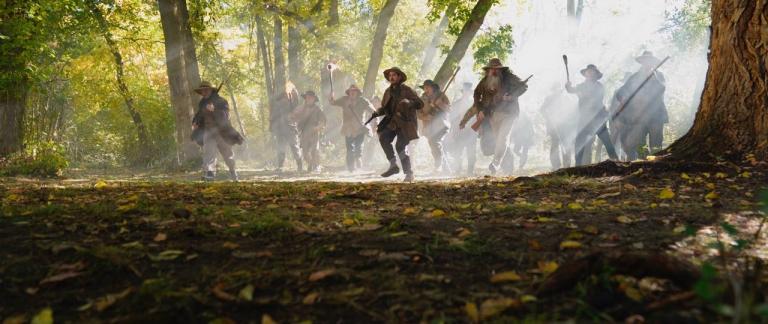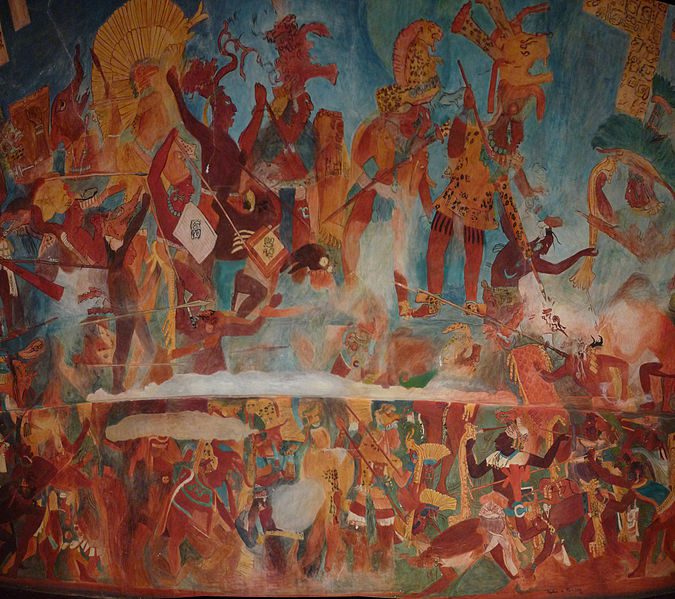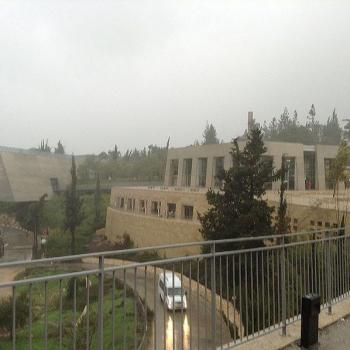
Today, 27 June, is the 181st anniversary of the martyrdom of Joseph and Hyrum Smith. I haven’t been looking for such things, but I have already seen one celebratory note about the murders. It was posted by a former member of the Church of Jesus Christ of Latter-day Saints, and it puts me in mind of Matthew 7:16-20.

This article, written by Matthew Roper, went up earlier today in Interpreter: A Journal of Latter-day Saint Faith and Scholarship: Anachronisms: Accidental Evidence in Book of Mormon Criticisms, Chapter 9, “Concluding Observations”:
[Editor’s Note: We are pleased to present chapter 9 from a book entitled Anachronisms: Accidental Evidence in Book of Mormon Criticisms. It is presented in serialized form in this volume of Interpreter: A Journal of Latter-day Saint Faith and Scholarship. This is immediately followed by a selected bibliography for the book.]
Incidentally, when Matt Roper’s series of articles began to appear in Interpreter roughly two months ago, I saw a few critics deriding his effort. If these represent the best arguments for the historicity of the Book of Mormon, two or three people chortled, then the claims to historical authenticity of the Book of Mormon are in truly pathetic shape. But this derision missed the point of the enterprise, which wasn’t primarily to present a collection of “the strongest evidences” for the claims of the book but, rather, to argue that, to a considerable extent, objections raised against the historicity of the book appear to have been neutralized. That some of the facets of the book where this has happened have now, paradoxically, become areas of actual strength for its claims is interesting and significant but was never a principal focus or goal. Shoring up seeming deficiencies in a case or an argument is a distinct effort from emphasizing the facts that seem to be most persuasive in its favor. Both are vital, but they should not be confused. In football, a good defense is very important, and it may even sometimes score a touchdown. But it doesn’t replace a strong offense.
Matt Roper’s article is accompanied in the journal today by “Expanding the Descriptive Vocabulary for the Translation of the Book of Mormon,” written by Brant A. Gardner
Abstract: There are many questions that can be asked about the translation of the Book of Mormon. This paper focuses on a single question: What was the relationship between the English translation and the Nephite text? Of course, without the original, we must speculate, but it is suggested that there are two concepts used in modern translation theories that can help us understand why certain elements appear in the English translation that might appear to have a questionable relationship to an ancient Nephite text.
See also “Interpreting Interpreter: A Localized Book of Mormon,” written by Kyler Rasmussen
This post is a summary of the article “Expanding the Descriptive Vocabulary for the Translation of the Book of Mormon” by Brant A. Gardner in Volume 66 of Interpreter: A Journal of Latter-day Saint Faith and Scholarship. All of the Interpreting Interpreter articles may be seen at https://interpreterfoundation.org/category/summaries/. An introduction to the Interpreting Interpreter series is available at https:/interpreterfoundation.org/interpreting-interpreter-on-abstracting-thought/.
A video introduction to this Interpreter article is now available on all of our social media channels, including on YouTube at https://youtube.com/shorts/9TzOFcVerME.
The Takeaway: Gardner argues that that many of the apparently 19th century features of the Book of Mormon text could be explained by how translations across cultures often operate, particularly if was treated as a localized translation (into something that would be meaningful to a 19th century audience) and was a translation up into English as the privileged vernacular.

For those of you — if there are any of you — who can access the Wall Street Journal, this article about the current state of the Anglican Church in the United Kingdom is, I think, rather sobering: “Church of England, Disestablish Thyself: Christian witness is incompatible with the militantly secular British government”
And, for any out there who might have access to the New York Times, here’s a perfectly appalling story: “A White Nationalist Wrote a Law School Paper Promoting Racist Views. It Won Him an Award. The University of Florida student won an academic honor after he argued in a paper that the Constitution applies only to white people. From there, the situation spiraled.” If you’re able to read the article, you’ll understand why I hope that, should he graduate from law school and pass the bar exam — both of which seem likely — he will nonetheless be denied admission to the bar on the grounds of deficiency in moral character. Or, if that doesn’t work, that no reputable law firm will wish to hire him or to be associated with him. And I think that such a reaction to him seems fairly likely. What modern law firm would want, as one of its attorneys, an explicitly anti-Jewish White Nationalist who isn’t terribly offended at being described as a Nazi?

Okay. So I invited you the other day to look at the first two products of our new Interpreter Foundation Podcast and to offer any suggestions that you might have for its improvement. Yesterday, I finally got a chance to look at it myself and, well, it was awful. Embarrassing. The production quality is absolutely terrible. So I want to thank you all for not writing here to say what you could, quite justifiably, have said. You might have had me contemplating a plunge from a cliff.
There were specific reasons for that disastrous quality and, both by telephone and via email, a few of us have been discussing them and what steps we’re intending to take to ensure that things become better in the future. For one thing, we’re likely to opt in the near (and perhaps in the middle) term for an audio podcast rather than a video podcast. (Some have always preferred that approach anyway.) In any case, be assured that we’re aware of the issues and that we won’t be continuing in that vein. And that no extra guards need to be posted on local cliffs and bridges.
Move along! Move along! There’s nothing to see here!










